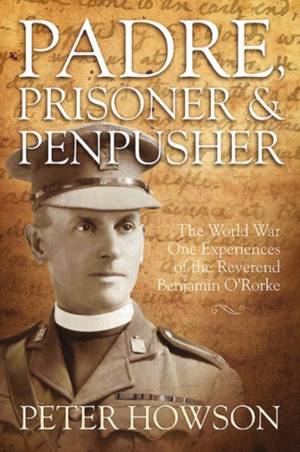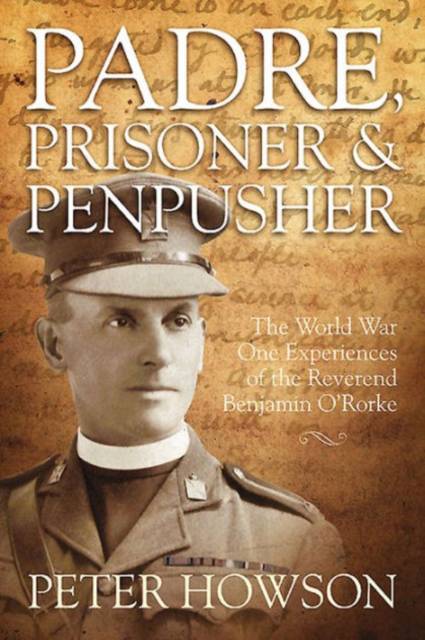
- Retrait gratuit dans votre magasin Club
- 7.000.000 titres dans notre catalogue
- Payer en toute sécurité
- Toujours un magasin près de chez vous
- Retrait gratuit dans votre magasin Club
- 7.000.0000 titres dans notre catalogue
- Payer en toute sécurité
- Toujours un magasin près de chez vous
Padre, Prisoner & Penpusher
The World War One Experiences of the Reverend Benjamin O'Rorke
Peter Howson
Livre relié | Anglais
34,95 €
+ 69 points
Description
Few army chaplains had as varied a career during the First World War as the Reverend Benjamin O'Rorke. A regular army chaplain who had seen service in the Boer War he was mobilized with 54 other chaplains at the start of hostilities. He went to France with 4 Field Ambulance where he was taken prisoner by the Germans at the end of August 1914. He was repatriated in July 1915 and wrote a book of his experiences. Returning to France he served as frontline chaplain before being posted to serve as a staff chaplain to the Deputy Chaplain General. Posted back to the UK in June 1918 he died on 25th December 1918 during the flu epidemic. The central part of the book is a transcription of the diary he kept during January to June 1918. At the heart of the administration of Church of England chaplaincy on the Western Front he recorded an inside view of how chaplains were thinking, particularly about postwar British society. His notes include record of sermons preached throughout the war which give a fascinating record of one chaplain's perspective on the developing war. The book puts the experiences of Ben O'Rorke within the context of chaplaincy during the First World War. His story ran in parallel to that of Bishop Llewellyn Gwynne, Bishop of Khartoum, who had been in London in August 1914 and with the help of O'Rorke had been commissioned into the Army Chaplains' Department. Gwynne had prepared O'Rorke for confirmation. It is into Gwynne's office as DCG that O'Rorke would be posted. Gwynne's extensive war time diaries help to shed light on O'Rorke and his work. This book will appeal to all who are interested in how a regular army chaplain coped with mobilization, life as a prisoner of war, and then of the ever lengthening war. It provides information on the large number of chaplains with whom he came into contact whilst keeping the diary. As well as an introduction and notes to explain the diary and other writings there is a discussion about the value of chaplains' diaries and letters in understanding the First World War. Additionally, guidance is provided as to where original source material can be located.
Spécifications
Parties prenantes
- Auteur(s) :
- Editeur:
Contenu
- Nombre de pages :
- 176
- Langue:
- Anglais
Caractéristiques
- EAN:
- 9781910294703
- Date de parution :
- 12-06-15
- Format:
- Livre relié
- Format numérique:
- Genaaid
- Dimensions :
- 152 mm x 229 mm
- Poids :
- 544 g

Les avis
Nous publions uniquement les avis qui respectent les conditions requises. Consultez nos conditions pour les avis.






